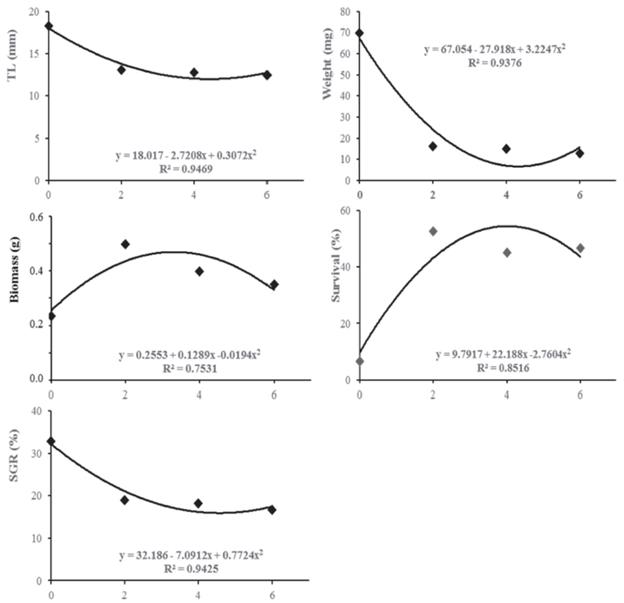ABSTRACT
Two experiments were carried out to study piabanha-do-Pardo (Brycon vonoi) larvae development. In the first, six different diets were evaluated, being Artemia sp., plankton, feeds, feeds + Artemia sp., feeds + plankton, and Prochilodus hartii (curimba) larvae. In the second, four different water salinity levels (0, 2, 4, and 6‰) were tested. Both assays were entirely randomized design experiments, lasting for 10 days. At the end of these trials, fish biomass, survival, total length, weight, and specific growth rate were measured. Additionally, water quality, temperature, oxygen, pH, and electric conductivity measurements were made every three days. The curimba larvae diet presented higher survival rate (47.2%) and biomass weight (2.5 g) than the other diets, which were similar among each other. Piabanha-do-Pardo larvae weight, length, and specific growth rate varied with the offered diets. All water salinity treatments showed better results than those observed for fresh water. When cultivated in 2‰ salinization, larvae had 52.5% survival rates and 0.49 g biomass weight, while in the fresh water these results were 6.6% and 0.23 g, respectively. To conclude, we may identify curimba larvae as an adequate diet, and a 2‰ water salinity as recommended if Artemia sp. larvae are fed to piabanha-do-Pardo larvae.
Keywords:
Artemia sp.; cannibalism; characiforms; native species; diet management; Prochilodus hartii.

 Thumbnail
Thumbnail
 Thumbnail
Thumbnail

